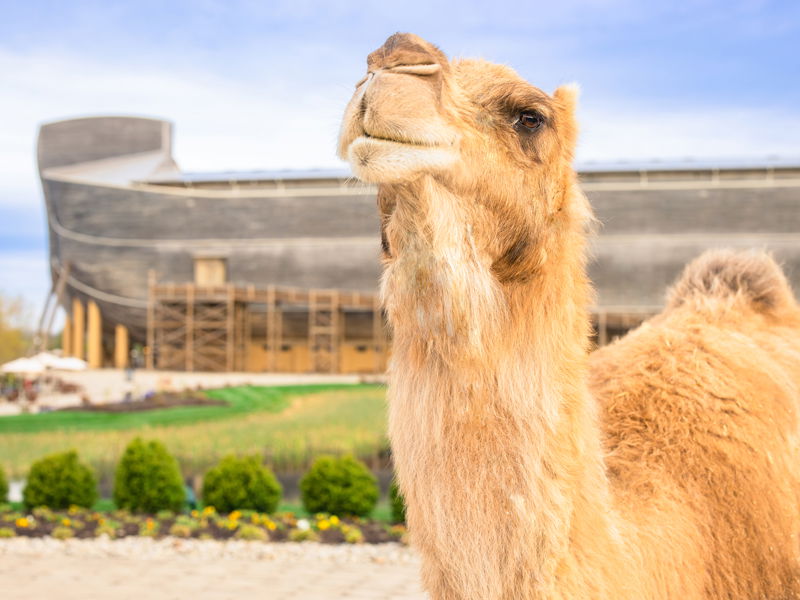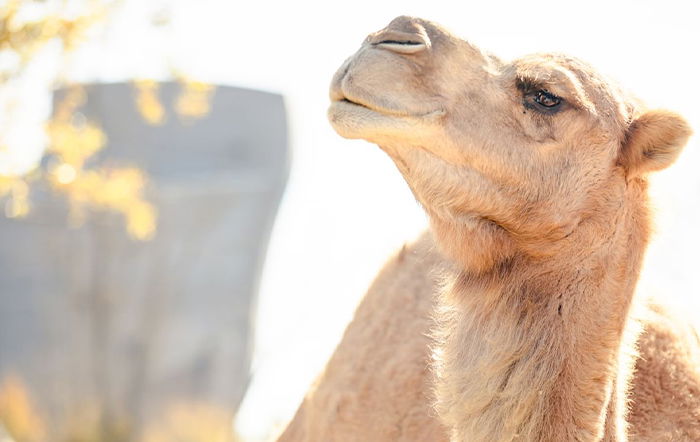Camel Encounters
Enjoy an unforgettable experience meeting a camel up close! Feed it some lettuce and pose for a photo! Discover more about Camel Encounters and dromedary camels below.
What Is a Camel Encounter?
Camel Encounters give our guests the opportunity to feed and pose for photos with our dromedary camels. Be aware that touching is always at the discretion of our zoo staff.
How Much Does It Cost?
Tickets are $5.00 per encounter. One encounter includes three pieces of lettuce. Guests may purchase as many encounters as they'd like. Price includes 6% Kentucky sales tax.
When Are Camel Encounters Offered?
Camel Encounters are offered year-round, weather permitting, as an alternative to camel rides when they are not available. The specific dates and times that encounters are available vary by season, so check your daily schedule upon arrival.

Dromedary Camel
These “ships of the desert” can survive for weeks and travel over 100 miles without food or water!
Day of Creation: six
Biblical Kind: camelid (also includes Bactrian camels, llamas, guanacos, alpacas, and vicunas)
Status: least concern (domesticated)
Height: 6–7 feet at the shoulder
Weight: 1200–1600 pounds
Habitat: deserts of northern Africa and the Middle East, but domesticated worldwide
Lifespan: 30–50 years
Diet: dry grasses, shrubs, and thorny plants
Family Life: live in large caravans
Reproduction: single calves are born after a 12- to 14-month gestation
Fun Facts

Contrary to popular myth, camels do not store water in their humps! Camel humps are made up of fat and cartilage. Camels store water in their oval-shaped blood cells, which can expand two-and-a-half times in size to store huge amounts of water. In fact, camels can drink 30 gallons of water in ten minutes!
Even the hottest deserts may drop below freezing at night, but camels can survive both extreme heat and cold, and are able to fluctuate their internal body temperatures between 93°F and 106°F.
Camels have clear third eyelids, long eyelashes, and long ear hair to protect against sand. They can also seal their nostrils to prevent inhaling sand during sandstorms.
Leathery foot pads allow camels to walk on top of the sand instead of sinking down into it. They also have tough calluses on their knees and chests that support their bodies while lying down, preventing burns from hot sand.
Dromedary camels have been vital to the survival of desert cultures throughout history. They can be conditioned to carry up to 1000 pounds for 25 miles per day. They also provide fiber, hides, milk, meat, and feces for use. Camel racing is also a popular sport, as camels can run up to 40 miles per hour!